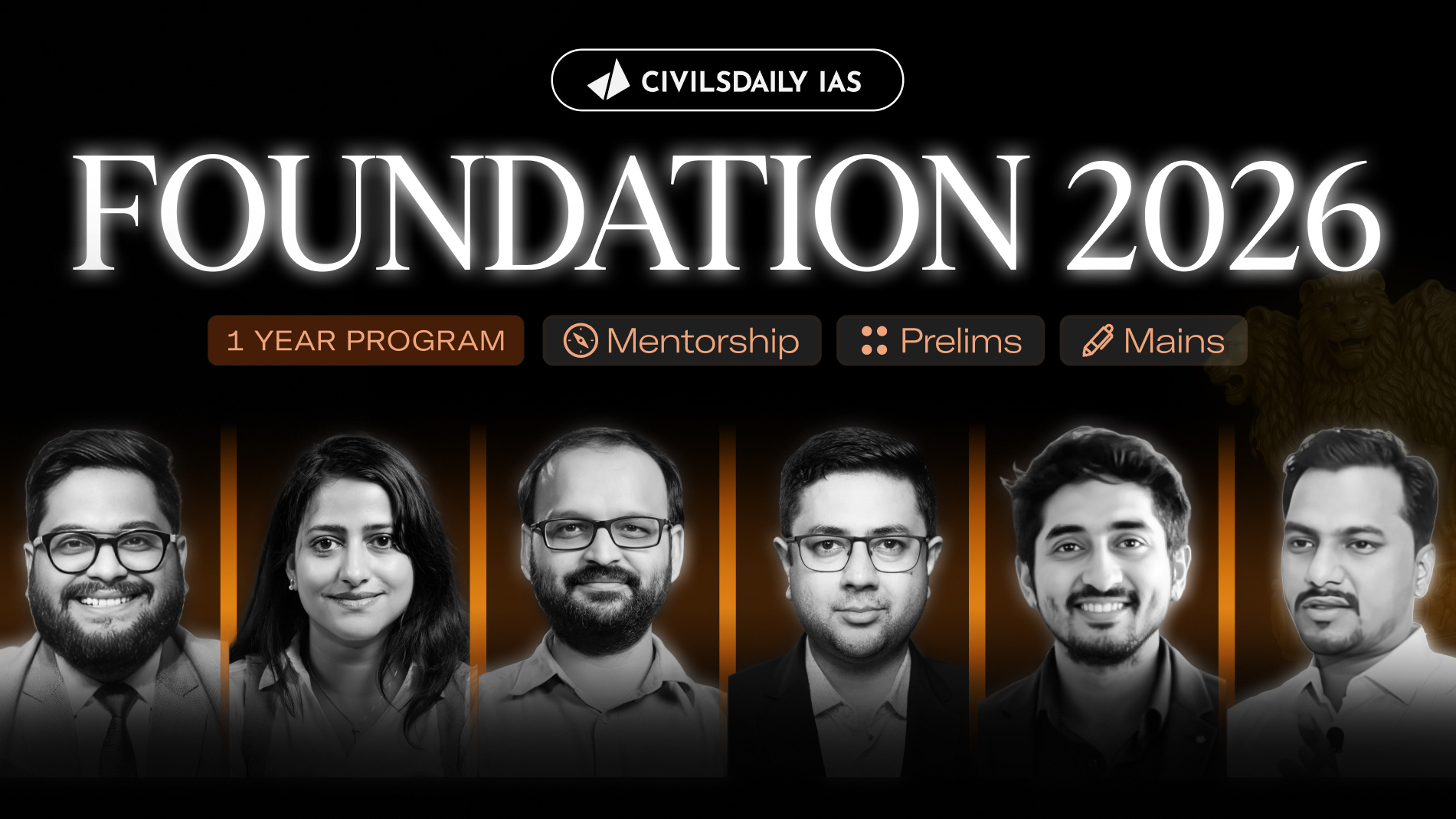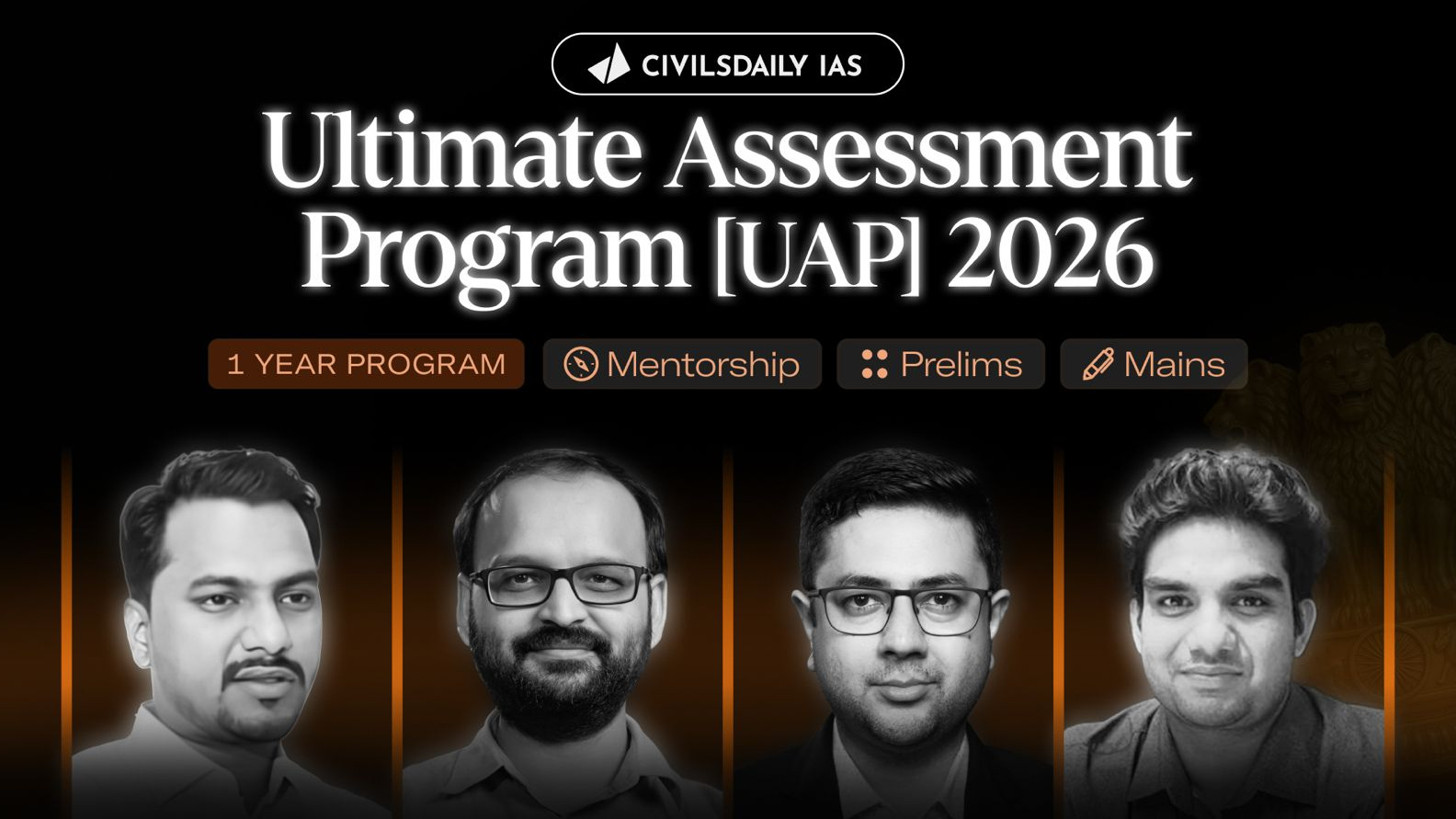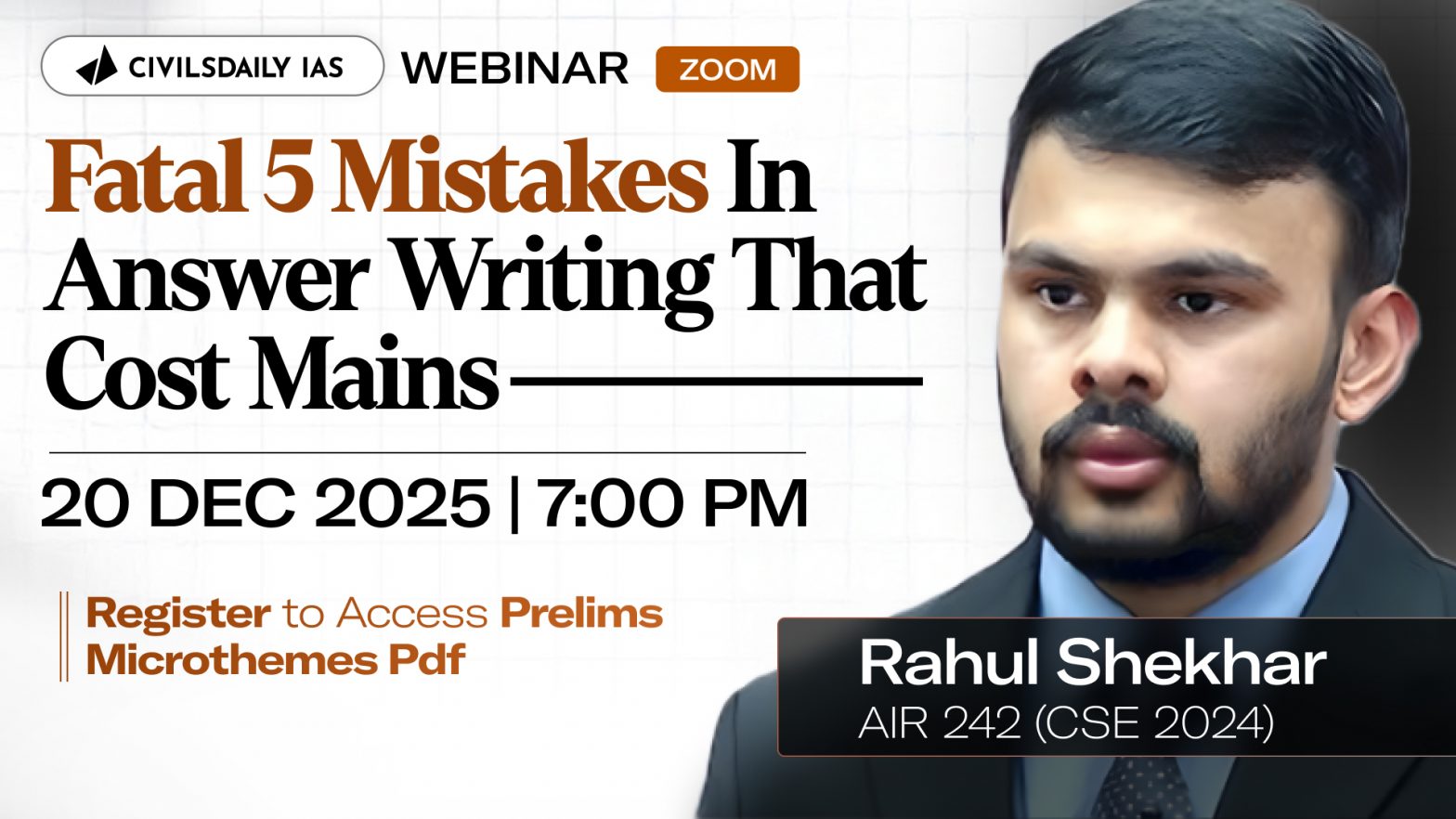





Burning IssuesInterview ProgramMotivation BytesPrelims DailyPrevious Year Question PaperProgram LaunchRanker WebinarsThe Hindu Op-edToppers TestimonialsUPSC Mains Topic-Wise PYQsUPSC PreparationUPSC SyllabusX Factor Notes
17th August
UPSC GS2 | Effect of policies and politics of developed and developing countries on India’s interests, Indian diaspora
North Korean Fusion Bomb test in bid to change world power equation Why G4 nations need a hardball diplomacy? Demystifying The Concept Of Diplomatic Immunity What is economic integration and what are the different types of trade agreements? Different levels of Diplomacy | Track 1, Track 2, Track 3 USTR’s Special 301 Report & India’s… Continue reading UPSC GS2 | Effect of policies and politics of developed and developing countries on India’s interests, Indian diaspora
UPSC GS2 | India and its neighbourhood – relations
India and its neighbours: Back2Basics Afghanistan Bangladesh Bhutan India Bhutan Relations: Key Developments China Maldives Myanmar Myanmar: Backgrounder with Timelines India Myanmar Relations: Key Developments Change in dynamics Nepal Pakistan Sri Lanka CD Explains: Role of border states in India’s Foreign Policy Indian maritime challenges and its diplomatic dimensions Understanding the refugee crisis and lessons… Continue reading UPSC GS2 | India and its neighbourhood – relations
[Official Review] 17 Aug 2017 | Target Mains: GS Questions With Official Answers
GS Paper 1 Q.1) Along with economic factor it was the misrule and inefficiency of CZAR Nicholas II which sowed the seeds of Russian Revolution. Comment. NCERT Answer Structure: The Russian Revolution was 1 of the most significant event in Modern World History.The Russian revolution not only transformed Russia but its effect was felt far… Continue reading [Official Review] 17 Aug 2017 | Target Mains: GS Questions With Official Answers
17 Aug 2017 | GS 4 | What in meant by ‘environmental ethics? Why is it important to study? Discuss any one environmental issue from the viewpoint of environmental ethics.
GS Paper 4 Q.4) What in meant by ‘environmental ethics? Why is it important to study? Discuss any one environmental issue from the viewpoint of environmental ethics.
17 Aug 2017 | GS 3 | What do you understand by sex semen technology. Discuss the usefulness of sex semen technology for our dairy sector?
GS Paper 3 Q.3) What do you understand by sex semen technology. Discuss the usefulness of sex semen technology for our dairy sector? Source: https://www.civilsdaily.com/op-ed-snap-how-technology-can-deliver-freedom-from-male-calf/
17 Aug 2017 | GS 2 | The proposed wage code Bill, which incorporates a universal minimum wage, will lead to higher unemployment and informalization of the economy. In the light of the above statement critically Discuss the key features of proposed wage code bill?
GS Paper 2 Q.2) The proposed wage code Bill, which incorporates a universal minimum wage, will lead to higher unemployment and informalization of the economy. In the light of the above statement critically Discuss the key features of proposed wage code bill? Source: http://www.livemint.com/Opinion/WgZM9HZxouo9qiByArRETP/Having-a-minimum-wage-law-is-a-mistake.html
17 Aug 2017 | GS 1 | Along with economic factor it was the misrule and inefficiency of CZAR Nicholas II which sowed the seeds of Russian Revolution. Comment.
GS Paper 1 Q.1) Along with economic factor it was the misrule and inefficiency of CZAR Nicholas II which sowed the seeds of Russian Revolution. Comment. NCERT
UPSC GS2 | Bilateral, regional and global groupings and agreements involving India and/or affecting India’s interests
Bilateral Groupings & agreements involving India’s interests India, US defence ties – What are LSA, CISMOA and BECA agreements? India Europe relations India-Africa Forum Summit: Old Friends – Old Family, India Africa Relations (Back2Basics) India-Russia relations : Momentum in transforming Strategic Partnership, India-Russia relations (Back2Basics) India-Japan relations (Back2Basics) India-Central Asia relations (Back2Basics) India-West Asia relations… Continue reading UPSC GS2 | Bilateral, regional and global groupings and agreements involving India and/or affecting India’s interests
UPSC GS2 | Important International institutions, agencies and fora, their structure, mandate
Important International institutions | Origins, Growth, Mandates and India’s overlap Important International Economic Organizations (Back2Basics) Everything that you should know about the World Trade Organization (WTO) 5 Important International NGOs which often recur in news Bretton Woods Institutions – World Bank Group Bretton Woods Institutions – IMF Important World Reports & their Organisations | Important… Continue reading UPSC GS2 | Important International institutions, agencies and fora, their structure, mandate
UPSC IAS Mains Syllabus
The Union Public Service Commission (UPSC) has revised the pattern of UPSC Main examination from 2015 onwards. The written examination consists of 9 papers,in which, 2 are qualifying papers and 7 papers are counted for ranking. As per new UPSC Mains Syllabus, general studies papers consists of 1000 marks. The detailed syllabus for GS1 – 4… Continue reading UPSC IAS Mains Syllabus
17 August 2017 | Prelims Daily with Previous Year Questions & Tikdams
Q.1) Consider the following statements regarding the ‘Bitcoin’: 1. It is a cryptocurrency with Blockchain Technology. 2. It was released as open-source software in 2009. Which of the statements given above is/are correct? a) 1 only b) 2 only c) Neither 1 nor 2 d) Both are correct Q.2) Which of the following statements regarding… Continue reading 17 August 2017 | Prelims Daily with Previous Year Questions & Tikdams
16th August
how to get CD monthly current affairs compilation ?
how to get CD monthly current affairs compilation ? Need PDF copies.
Indo-Afghan Relations: Developments in Afghanistan till 2016
source Backgrounder 1838-42 – British forces invade, install King Shah Shujah. He is assassinated in 1842. British and Indian troops are massacred during retreat from Kabul. 1878-80 – Second Anglo-Afghan War. A treaty gives Britain control of Afghan foreign affairs. 1919 – Emir Amanullah Khan declares independence from British influence. 1926-29 – Amanullah tries to introduce social reforms, which… Continue reading Indo-Afghan Relations: Developments in Afghanistan till 2016
16 Aug 2017 | GS 4 | The civil servants, even after being recruited through a transparent selection process, tend to become corrupt after entering into the service. Discuss the reasons behind this trend that has become very common now a days?
GS Paper 4 (Ethics & Integrity) Q.4) The civil servants, even after being recruited through a transparent selection process, tend to become corrupt after entering into the service. Discuss the reasons behind this trend that has become very common now a days?
16 Aug 2017 | GS 3 | Focus should shift from relief measures to building resilience in flood-prone areas. In the context of above statement discuss the problems in flood governance regime in India. What should be done to improve the situation?
GS Paper 3 (Disaster management) Q.3) Focus should shift from relief measures to building resilience in flood-prone areas. In the context of above statement discuss the problems in flood governance regime in India. What should be done to improve the situation? Source: http://indianexpress.com/article/opinion/columns/living-with-the-deluge-northeast-flood-4798615/
16 Aug 2017 | GS 2 | Centralising recruitment will not address the multiple problems in the judiciary. In the context of above statement critically discuss whether there is case for an all India Judicial service in India?
GS Paper 2 (Polity & Governance) Q.2) Centralising recruitment will not address the multiple problems in the judiciary. In the context of above statement critically discuss whether there is case for an all India Judicial service in India? Source: http://www.thehindu.com/opinion/op-ed/no-case-for-an-all-india-judicial-service/article19498261.ece
16 Aug 2017 | GS 1 | Explain the factors responsible for the origin of ocean currents. How do they influence regional climates, fishing and navigation?
GS Paper 1 (Physical Geography) Q.1) Explain the factors responsible for the origin of ocean currents. How do they influence regional climates, fishing and navigation?
16 Aug 2017 | Target Mains: GS Questions With Official Answers
GS Paper 1 (Physical Geography) Q.1) Explain the factors responsible for the origin of ocean currents. How do they influence regional climates, fishing and navigation? Ocean currents are continuous, directed movements of sea water. ORIGIN OF OCEAN CURRENTS: Ocean currents are a result of gravity, wind, the Coriolis Effect, temperature, salinity and density differences. Surface… Continue reading 16 Aug 2017 | Target Mains: GS Questions With Official Answers
15th August
The Islands
There are two major island groups in India The island groups of Bay of Bengal: Andaman & Nicobar Islands The island groups of Arabian Sea: Lakshadweep and Minicoy Islands The Physiographic Divisions of India | The Islands Let’s take these up one by one: Andaman & Nicobar Islands: Also called the emerald islands. Location and… Continue reading The Islands
The Indian Desert
The Indian desert is also known as the Thar Desert or the Great Indian Desert. Location and Extent: Location – To the north-west of the Aravali hills. It covers Western Rajasthan and extends to the adjacent parts of Pakistan. The Physiographic Divisions of India | The Indian Desert Geological History and Features Most of the… Continue reading The Indian Desert
Slide Anything shortcode error: A valid ID has not been provided






